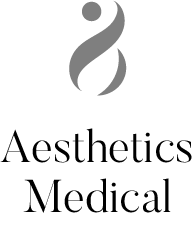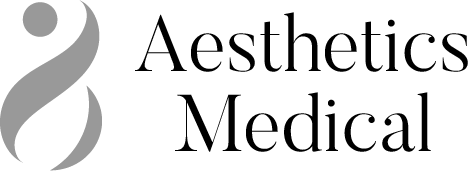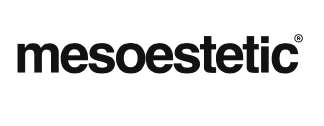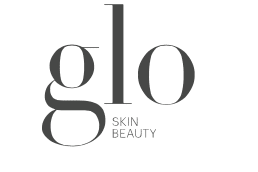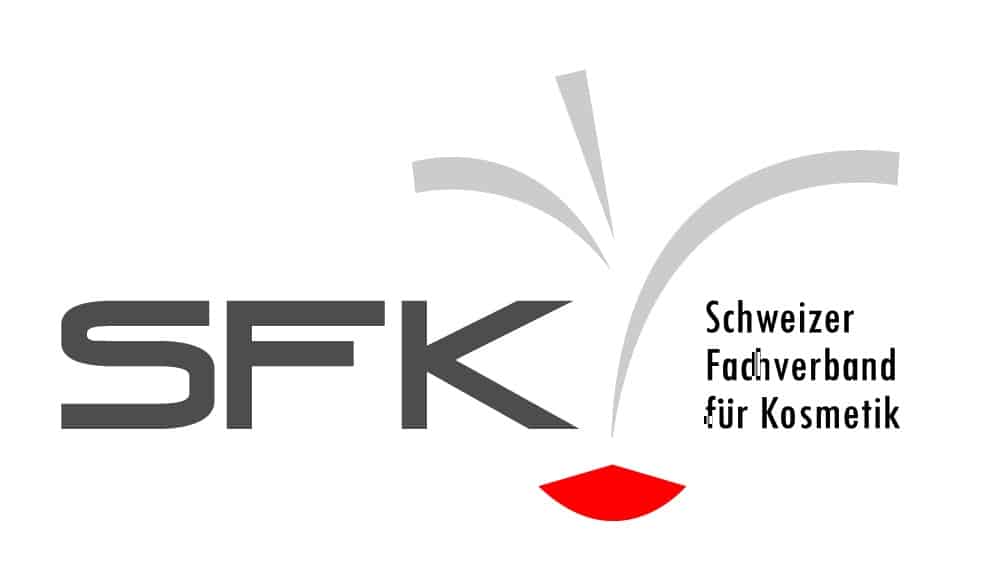Product Summary
- Treats hyperpigmentation, (acne) scars, large pores & wrinkles
- Removes dead skin cells, smoothes and softens the skin
- Moisturises and promotes cell division and collagen formation
- Refines & unclogs pores
- Has anti-inflammatory & antibacterial effects
- Price is per treatment: Depending on treatment area
- No needles used & no anaesthesia required
- Not recommended in the summer months, aftercare recommended
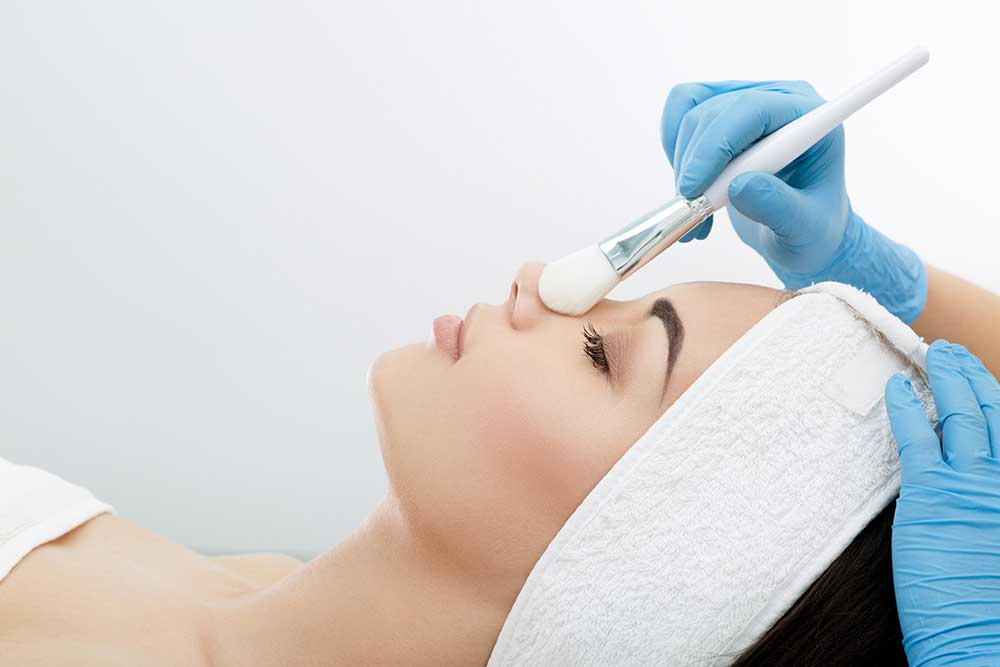
What is a fruit acid /chemical peel?
A chemical peel is used for the aesthetic dermatological treatment of the skin by removing the outer skin layer with the help of active ingredients including fruit acids such as mandelic acid, glycolic acid and citric acid. This peeling process removes dead skin cells, regenerates the skin and is suitable for impure, large-pored skin or skin diseases such as acne, increased cornification or rosacea.
After one treatment, the skin is refreshed, moisturised, and firmed. Fine lines and wrinkles are reduced. The overall appearance and tone of the skin is more even. The skin also becomes more receptive to valuable active ingredients and, depending on the concentration, even to the stimulation of collagen production.
Depending on the skin type, different fruit acid peelings are used, which are based on the following combinations: AHA (alpha hydroxy acids), BHA (beta hydroxy acids) or PHA (polyhydroxy acids).
- AHA is based on lactic acid, mandelic acid and glycolic acid and works on the surface of the skin and is suitable for sensitive, normal to dry skin and sun-damaged skin. AHA is particularly effective in improving skin texture.
- BHA is based on salicylic acid and is suitable for normal to oily skin. It is ideal for treatment of imperfections, large pores and blemish-prone skin. BHA also belongs to the superficial chemical peelings, but has a pore-deep effect in contrast to exclusively AHA-based peelings. Therefore, this solution is also suitable for cornification disorders, acne and psoriasis.
- PHA-based peels consist of large molecules and do not penetrate as deeply into the skin. This type of peel is suitable for sensitive skin types that are easily irritated.
Other chemical peels are not primarily derived from fruit acids, but from vegetables and wheat or other chemical compounds.
Advantages of fruit acid /chemical peel
What are the advantages of a fruit acid /chemical peel?
Fruit acid peeling or chemical peels are among the most effective methods of improving the skin's appearance in a very short time. The following benefits are associated with this treatment:
- Improved skin texture: The skin texture is significantly improved by the peeling. Blemishes and impurities due to acne are significantly reduced and clogged pores are unclogged. Pigmentation spots also disappear or are significantly reduced. Dead skin is removed and the entire complexion looks more even, firmer and smoother.
- Preventive method: The fruit acid peeling and other chemical peelings have an anti-inflammatory and antibacterial effect - this effect especially helps to prevent skin diseases, cornification disorders and skin impurities.
- Gentle method: Although the treatment results in the peeling of the skin, it is still a superficial to medium-deep treatment of the skin.
- Anti-aging effect: The top layer of skin and, depending on the depth of treatment, the underlying dermis are in the process of regeneration after treatment. Cell division and collagen synthesis are promoted depending on the strength of the peeling. In addition, the skin is particularly receptive to active ingredients. Overall, the skin is moisturised and appears smoother and firmer. Fine lines and wrinkles are reduced and the skin appears more youthful and smoother.
- Non-invasive method: The peel is performed without needles or injections. The solution is applied directly to cleansed and dried skin. How much the skin peels depends on the active ingredient.
- Multiple effects: Peeling achieves visible improvements in
- the removal of pigmentation spots or melasma
- sunken scars,
- large pores or
- sagging skin and wrinkles
- for skin impurities and cornification disorders
Further advantages include:
- No anaesthesia, no incision and no scars
- Good tolerance according to experience
- Cleansing, antibacterial and anti-inflammatory effect
Who should not get a fruit acid /chemical peel?
The downtime depends on the depth of the peel. In addition, the treatment may cause redness, irritation and tightness of the skin. These effects may be perceived as unpleasant, but are normal as part of the therapy. Nevertheless, if possible, no important attendance appointments should be scheduled during the healing phase.
The treatment is not recommended for:
- Skin rashes, skin diseases (e.g., herpes, eczema, neurodermatitis) or irritated skin
- Acute viral diseases of the face
- People with fresh wounds or wound healing disorders
- Patients undergoing treatment (e.g., Roaccutane, photosensitising drugs)
- Summer time
- Medium depth peels are not suitable for darker skin
- Pregnancy or breastfeeding
How much does a fruit acid /chemical peel cost?
| Face, neck or décolleté | CHF 200 |
| Treatments on the body (depending on the treatment zone) | from CHF 200 |
Who will benefit from a fruit acid /chemical peel?
Our peelings are suitable for patients with skin problems (such as acne, hyperpigmentation, cornification disorders or scars), sagging, large-pored skin or a tired complexion. The treatment is well tolerated, but redness, irritation, itching and tightness of the skin may occur during the downtime. No important appointments should be scheduled immediately after the treatment and during the downtime.
What areas can be treated with fruit acid /chemical peel?
The peel is usually applied to the face, neck, décolleté and body.
When you come to our practice for your treatment, we can discuss the possible areas that could benefit from this procedure. We offer free consultations so you can learn more about your options before deciding if and which fruit acid peel /chemical peel is right for you.
Procedure: How does a fruit acid /chemical peel treatment proceed?
1. Preliminary discussion /consultation:
At the beginning of the first session, our expert will have a consultation with you. This will determine your desired result and treatment area, as well as whether and which peel is suitable for you. We inform you about possible risks and the realistic results to be expected. Subsequently, we agree on the type and duration of the therapy before starting in order to achieve optimal results.
2. Before the treatment:
After the consultation, the session is started. The area to be treated - face, neck, décolleté and/or body - is cleansed. Please do not apply heavy creams or make-up before the treatment, if possible, at least two hours before.
3. During treatment:
During the treatment, the skin is prepared for the absorption of the respective active ingredients. The active ingredients are applied and later washed off or neutralised depending on the exposure time. The procedure varies depending on the therapy and the desired intensity of the peeling. You will be informed about the procedure before the treatment.
4. After the treatment:
After the treatment, the skin typically benefits from better circulation, becomes tighter and starts to regenerate. Depending on the intensity and depth of treatment, a feeling of tension may occur and the skin begins to peel after a few hours. When and how strong the exfoliation is depending on the respective active ingredient. Accordingly, we recommend caring for the skin immediately after treatment according to instructions, avoiding sporting activities during the downtime (this may vary depending on the therapy) and protecting the treatment area from direct sunlight.
Some peels are very gentle; however, we recommend that the next chemical or fruit acid-based peel be repeated after one week at the earliest.
If you experience skin irritation, itching or other problems after the treatment, you can contact us at any time. We are here for you.
What to expect with fruit acid /chemical peel?
The results are very individual, as the success of the treatment depends on the initial situation of the skin texture and the desired result. Our treatment experience shows that the skin has significantly finer pores, pigmentation disorders such as age spots, melasma and sun spots are significantly reduced or disappear completely.
In the case of scars, the result depends on the size and depth of the scars and can vary depending on the duration of treatment. An improvement is visible in most patients after the first treatment. For optimal results, we recommend at least a series of two to three sessions.
Due to the different needs and skin types, we offer a range of chemical peels. Some are fruit acid based and are suitable for the treatment of acne scars, pigmentation spots and sagging skin.
Other peels, such as the Ferulac peel, also offers versatile results against hyperpigmentation, sun damage and improve skin texture. However, it is gentle on the skin with a particularly gentle exfoliation.
Azelaic acid-based peels use a natural active ingredient from grains and have anti-inflammatory and antimicrobial effects. This can be particularly helpful for patients who suffer from skin blemishes, acne and pimples. Sebum production is regulated, hyperpigmentation is reduced and melanin production is inhibited resulting in an even skin tone.
We offer free consultations so you can learn more about your options before deciding if and which peel is right for your skin and needs.
Does a fruit acid peel /chemical peel help against stretch marks?
Yes. According to application examples, the solution is also effective against stretch marks. If you would like to treat other zones on the body, you are welcome to contact us and we will invite you for consultation and treatment.
How does a fruit acid /chemical peel work?
We offer different peelings, which are used for cosmetic and aesthetic dermatological treatment. There are different degrees of effectiveness from superficial peelings to medium-deep treatments. All treatments cause a peeling of the uppermost skin layer (epidermis). This can treat age-related phenomena such as wrinkles and fine lines, as well as pigment spots and inflammation as well as cornification disorders. The treatment removes dead skin cells and stimulates the skin's regeneration process. New collagen fibres and elastin are formed. The skin is supplied with moisture and is restructured - this leads to a smoother skin appearance, which looks firmer and more youthful.
Fruit acid peels based on AHA (glycolic acid, lactic acid and mandelic acid) are suitable for an improved moisture balance, for removing dead skin cells, for firm and smooth skin, for supporting collagen formation and for reducing hyperpigmentation. Fruit acid peels based on BHA (salicylic acid) have a stronger effect, additionally cleaning clogged pores and refining them. In addition, these peelings have anti-inflammatory and antibacterial effects.
Medium-depth treatments can be based on fruit acid, among other things, but also on TCA (trichloroacetic acid). They are recommended for deeper wrinkles, sun-damaged skin and pigmentation disorders as well as acne-related blemishes and scars.
With more intensive peels, the effect is stronger for smoother and firmer skin, but the healing time is also longer and the risk of side effects is higher.
How does fruit acid /chemical peel feel and is it painful?
Peeling can cause redness, burning, tingling and tightness or itching of the skin during and after the treatment. As the uppermost layer of skin is removed, the skin becomes more sensitive and must be cared for and protected accordingly.
The deeper the peeling penetrates into the skin, the more effective the treatment is - however, the aftercare and healing process takes longer. We offer superficial to medium-deep treatments in our practice and are also there for you after the treatment.
What are the possible risks and side effects of fruit acid /chemical peel?
Possible side effects and risks with superficial to medium depth peels include skin irritation such as redness, burning, itching and tightness of the skin. Skin irritation subsides after a few hours or a few days with superficial peels. With peels of greater intensity, the face tends to be unpresentable until the required recovery time has passed. In addition, the uppermost skin layer peels off. Therefore, no important appointments should be made during the downtime.
Rare side effects include pigmentary shifts, infections or prolonged itching. The risk of side effects is increased by smoking and sun exposure - both should be avoided. Sun protection is indispensable after treatment. In addition, the skin is sensitive - it should not be damaged and should not be treated itself in case of newly occurring inflammations /skin impurities.
Another peeling should be repeated after one week at the earliest, depending on the treatment. Some peelings also require specific after-treatment with products. We will inform you about the correct aftercare so that the healing phase runs smoothly.
How long does the recovery take?
The healing phase can take up to a week. Gentler peels require a shorter downtime. This basically depends on the active ingredient and the intensity of the peel and is therefore determined individually.
Can I do sports after the fruit acid /chemical peel?
We recommend that you do not take up any sporting activities directly after the treatment, but wait for the healing time. Afterwards, physically strenuous activities can be resumed.
How long is the skin sensitive after fruit acid /chemical peel treatment?
The top layer of the skin is removed by the treatment. Depending on the intensity of the treatment, the skin may be sensitive, reddened and irritated for up to a week. A further peeling should therefore be carried out after 7 to 10 days at the earliest.
How long does it take to see results with the fruit acid /chemical peel?
Immediately after the treatment, you will have noticeably firmer, more hydrated skin with better circulation. Lines, crow's feet and other wrinkles are reduced and refined. Depending on the strength of the peeling, the uppermost skin layer is exfoliated over the next 3 to 7 days - after about a week or less, the results begin to be visible. I.e., pigment spots disappear, inflammation is clearly reduced and the skin is smoother and altogether fresher.
Experience shows that it takes five to six sessions to refine sunken scars. The results depend very individually on the given skin structure and tolerance.
We recommend repeating the treatments at intervals of 7-10 days if several sessions are planned.
Feel free to book a free consultation appointment so that we can discuss how many treatments you need to achieve your desired results. This will also allow us to estimate when you are likely to achieve your desired result.
Can I enhance the fruit acid /chemical peel results with additional peeling treatments?
Yes, but we recommend further peels after one week at the earliest, so that the skin has time to regenerate. In addition, radiofrequency treatments and mesotherapy are suitable methods to complement the treatment and thus achieve the desired goals.
How long do the results of fruit acid /chemical peel last?
Scar removal is permanent. The skin is visibly smoothed and firmer. Pigmentation disorders can be reduced or permanently disappear. As the uppermost skin layer peels off, skin impurities, cornification, pimples and clogged pores are loosened - inflammation is reduced. Whether these results are long-lasting depends on the individual skin condition.
How many sessions are needed?
The number of sessions depends very much on the treatment goal. Some peels already cause the reduction or total removal of e.g., pigment spots after the first treatment. Other skin conditions require an average of 3 to 6 treatments. The success is very individual and depends on the respective skin texture and the desired result.
We offer free consultations and are happy to talk to you about whether a fruit acid /chemical peel is right for you and approximately how many treatments are necessary for your goal.
What makes fruit acid /chemical peel different from other methods? What makes the procedure unique?
Fruit acid and chemical peels remove the top layer of the skin with the help of chemical agents. Other methods include mechanical peeling (e.g., microdermabrasion) or peeling with laser.
Chemical peels offer an alternative to superficial to medium depth treatments in our practice. Superficial treatments remove the uppermost skin layer, medium-depth treatments remove the entire outer skin layers. By individually applying an active ingredient, its concentration and exposure time, the strength of the peeling can be controlled according to the skin's needs and unique condition. This makes it possible to offer gentler methods of exfoliation. In addition, chemical peels have an anti-inflammatory and antimicrobial effect, which benefits patients suffering from skin impurities, acne and cornification disorders without further stressing the skin.
Other advantages over other methods:
- Shorter downtime
- No surgery, needles or anaesthesia required
- Effective for the treatment of pigmentation disorders
- Antimicrobial, anti-inflammatory effect
When and how was fruit acid /chemical peel discovered?
The first descriptions of chemical peels for skin rejuvenation date back to ancient Egypt. Modern phenol-based chemical peels were discovered in the 1940s in the USA. In the 1970s, research was conducted into the effect of fruit acids on the skin and the excessive removal of horny layers and the disappearance of relief wrinkles was discovered. Today, there is a range of chemical peelings that can penetrate the skin superficially, medium deep and deep.
